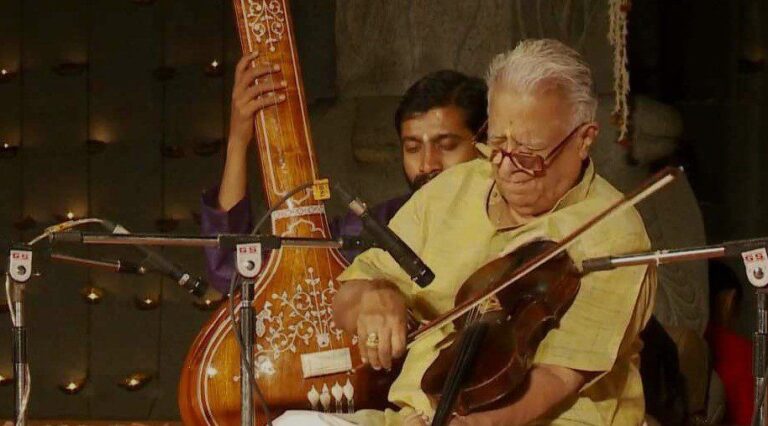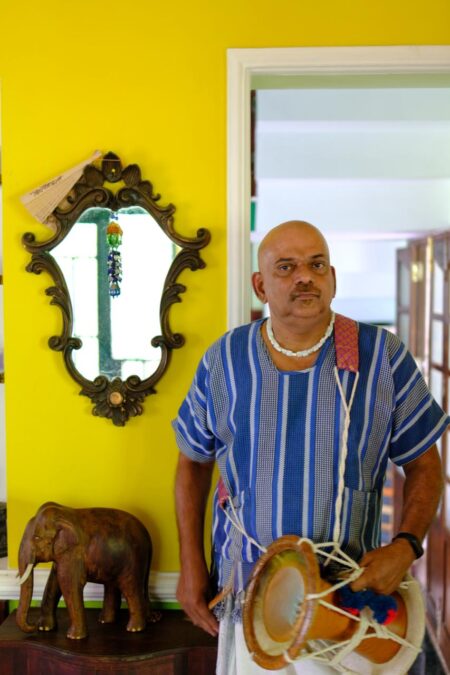Internationally acclaimed Carnatic violinist TN Krishnan turned 92 on October 6, 2020. A winner of the country’s Padma Bhushan civil honour (1992), he was born in Kerala, spent much of his life in Delhi, teaching in a university. Settled in Chennai, Prof Krishnan received Madras Music Academy’s Sangita Kalanidhi title in 1980. He emphasises the need for any art to change with the times.
As an idiom which flourished in the Deccan, how much has Carnatic music become popular over the past five centuries?
Carnatic music, even till the period around Independence (from the British), was concentrated in the south. Over the decades then, the form spread upcountry and also globally. Many of our old-time stalwarts seldom stepped outside their provinces. Today, artistes are travelling across continents, performing, giving lessons, delivering lectures and so on. As the scope of music widens, there is a drastic change in the way Carnatic is being perceived, learned and presented. In the past, we had very strict rules in its teaching and learning. Today, things are more relaxed. Even easy-going.
Canonically, the art was passed down through the residential gurukulam system. Today, several students resort to online classes…
Yeah, times have changed. We have to accept it and adapt accordingly. Technologies these days save a lot of time for both gurus and students. Skype and other video-calling facilities are helping students, more so in faraway countries such as USA, UK, Dubai or Singapore where we have Indians in good numbers. In fact, Skype, I’ve noticed, adds value to the time the student, as well as the teacher, spends during a session. Both are better-prepared; their focus is sharper. The follow-up practice, too, is done earnestly. For, you can’t be fumbling in your next online class.
From mike-less concerts to modern acoustics…how do you see it?
Earlier, kucheris used to happen in the light of oil-lamps. They were scooped-up audiences. Such was the silence, there was no need for a microphone. Artistes were able to concentrate well. Today, we have a factory ambience. There is a lot of noise around. Our musicians have got tuned to the restless crowds. Ask a modern-day artiste to sing in a calm place, (s)he will panic! (Laughs.) Even into the 1950s, Carnatic concerts by stalwarts used to span four or five hours. They doubled as practice sessions. Today, listeners do not have that much time. Neither patience. The concert has turned like an orchestration where the artist has to squeeze in everything: varnam, aalapana, kritis and tukadas…sometimes all that in just one hour. A capsule.
Don’t youngsters get more opportunities these days?
With advancements in recording technologies and electronic gadgets, youngsters can listen and learn a lot. All the same, the arts have become highly commercial. There are corporate sponsors and event managers. The good thing is ample opportunities to perform. But then, they need to go for a lot of practice. Daily, regularly. That is very important. Also, a lot many sabhas have come up recently. Again, such forums increase the performance scope for youngsters. Many sabhas are doing a great job in popularising music, facilitating training and promoting talents. However, gurus should continue to be like guides. Ideally, their prime job is to train, not perform. Students aren’t there to imitate their teacher. The good among them improvise and find their own style.
You have something to say about fusion music?
(Here, the maestro’s daughter, Viji Krishnan, a reputed violinist, chips in) Classical music always has its space. It, however, needs a certain training to appreciate. If you want to bring the general public into classical music, then fusion is the first step. Fusion is pleasing to ears; anybody can enjoy it. It can attract laypeople.
Has Carnatic music become more interactive of late?
Yes. The audiences are more inquisitive and ask questions about music. Many programmes feature question-answer segments. Lecture-demonstrations and workshops, too, have become a trend. They are where the connoisseurs and the uninitiated sit together and converse each other.




